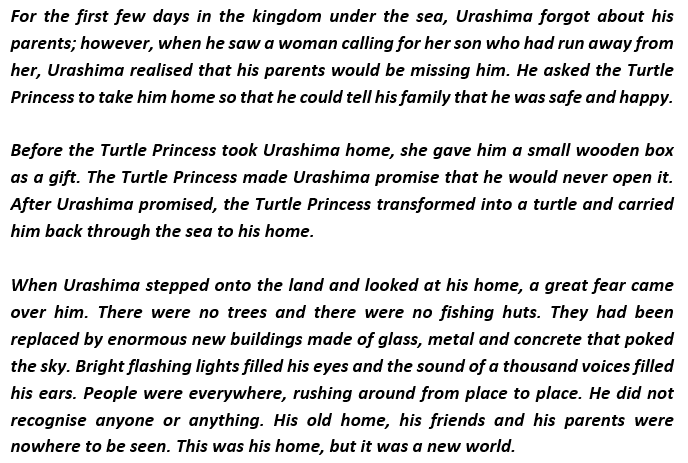Dance is a form of communication that generates meaning by using gesture, physical movement, space, and sound.
- Teachers may encourage the use of stimulus material to develop students' ability to communicate through dance. More generally, students in dance may read and view stimulus material for a variety of reasons, including to:
- develop understanding of choreographic intent
- explore ideas and intentions
- extend their own technical and expressive skills
- interpret meaning
- source stimulus to develop own intentions and dances
- evaluate how dances communicate social contexts and relationships.
When using stimulus material, teachers should be aware of:
- the genre, context of culture from which the material is drawn
- the importance of building students' understanding of the location, themes, characters, cultures, and intent of the material.
The above understandings support students to adapt and incorporate sequences of gesture, physical movement and/or music. Examples of stimuli to create movement may include:
- an image of underwater scene interpreted as slow, wavy motions
- footage of a violent protest interpreted as loud and sharp movements.
Using three level questioning to interpret and create images
The following strategy supports students' development of multimodal literacies through the translation of images into a series of movements and gestures. During the strategy, students apply literal, inferential, and evaluative questions to the images presented to develop a sequence of gestures or movements
The strategy draws on stimulus materials related to 'The Story of Urashima Taro, The Fisher Lad,' a Japanese fairy tale, a version of which can be found
here. This activity uses architectural images from modern Tokyo that Urashima may have encountered upon his return to his village after being away for 300 years.
- The teacher places visual texts of Japan around an open space. Students are asked to look closely at the images.



- The teacher directs all students to move to each image in turn. While surrounding each image, the teacher leads a discussion based on the students' observations using literal, inferential, and evaluative questions such as the following:
-
Literal: Locate and recall
- 'What do you see?'
- 'Is the space open or crowded?'
- 'Describe the buildings in the image'
-
Inferential: Infer and interpret. What do you think this means? Why?
- "Why do you think this structure was designed like this?"
- "What are those people doing? How do they feel?"
- "What colour are the leaves? What time of year is it? What might you be able to hear?"
-
Evaluative: Evaluate, synthesise, critique, and apply to other contexts.
- "How would this structure make you feel?"
- "How would you feel sitting in the middle of this scene?
- "What movements could you use to represent the feeling of the people?"
The teacher encourages students to use full sentences in their responses and to include specific evidence from the images to support and illustrate their ideas.
- After the students have shared their responses, the teacher asks them to form small groups.
- The teacher directs the students to draw on their oral responses to the stimulus materials and their
glossaries and
word banks in movements that convey a sense of place, feeling or emotion. The teacher provides examples that include
- 'The tower is isolated and removed from the surrounding buildings, so you feel alone and disconnected. You may stand still and not make eye-contact with people.'
- 'You feel impatient and annoyed, but also trapped, so you walk slowly, but in a zig-zag pattern trying to get out.'
- 'The woman stretches gently in the sun in the warm and serene garden, but from afar, the noise of the city can be faintly heard.'
- Student groups perform their movements for the whole class.
- After each performance, the teacher guides reflection and feedback. The teacher asks the student audience to:
- Identify movements that they felt embodied the scenario.
- Suggest other movements that could have been included.
- The teacher then asks the performers to explain their choices of movement.
- All students are encouraged to use full sentences and Dance-specific terminology.
Curriculum links for the above example:
VCADAE033,
VCADAE034,
VCADAD036,
VCADAP037,
VCADAE040,
VCADAE041,
VCADAD042,
VCADAD043,
VCADAR045.
Interpreting and annotating written text
When using written texts as stimulus material for creating movement, explicit teaching is used to explore features of the text closely. For example, the teacher may focus on:
- the language used to establish the setting of a narrative
- the use of adjectives to describe characters, emotions, and objects
- the use of verbs to describe movement
- the use of language devices such as repetition to create emphasis
- the structure of the text.
The following strategy uses a brief retelling of the Japanese tale about Urashima Taro. (A longer version of the story can be found
here.) The strategy outlines how modelled reading and guided annotation of the text provide students with resources to discuss and devise choreography for a sequence of movements to represent the story.

- The teacher presents the print text to the students. The teacher reads aloud the tale to students. The teacher uses expression, emphasis, volume and pauses to stress aspects of the story.
- The teacher asks students to offer interpretations of the text using prompts including:
- "What is the objective of Urashima's journey?"
- "How do you know? Which words or part/s of the text tell you this?"
- "What does this part of the text mean?"
- The teacher reiterates and elaborates on the students' interpretations.
- After the reading and initial discussion, the teacher asks the students to read the text again in pairs and identify and highlight/annotate:
- the language used to establish the setting of the narrative
- the use of adjectives to describe characters, emotions, and objects, for example, 'enormous,' 'flashing.'
- the use of verbs and verb groups to describe movement, for example 'rushing around'
- the use of figurative language and personification to create imagery, for example, 'poked the sky.' (Personification is language used to attribute human characteristics to non-human entities.)
- the use of language to create emotion at various stages of the narrative.
- After the students have annotated their copies of the text, the teacher and the students discuss how language from the text may be translated into movements. The teacher uses prompts to support the students' responses, for example:
- How might the phrase 'enormous new buildings made of glass, metal and concrete that poked the sky' be translated into movements?
- Discuss movements and dance elements you would choose to represent:
- Urashima realising that his parents would be missing him
- Urashima promising the Turtle Princess that he would never open the box
- the 'great fear' overcoming Urashima when he realises his home has changed.
- The teacher directs the students to draw on their
glossaries and
word banks and refine their descriptions of movements.
Curriculum links for the above activity:
VCADAE034,
VCADAD036,
VCADAE041.